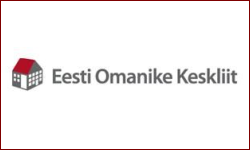Today’s residential market seens to be relatively calm, with sudden changes not taking place, writes Tõnu Toompark on his adaur blog. However, developments in the city centre of Tallinn, particularly in the high end of the market are certainly a contributory factor to why Tallinn’s apartment transactions have increased by 18 per cent over the last year, he writes.
It is hoped that large price increases remain exceptional, because otherwise prices would rapidly rise to a level which would put them beyond customers’ reach, Tõnu writes.
The third quarter of 2011 saw the number of apartment transactions progress, as had already been the case in the previous quarters and indeed previous year, Tõnu points out.
Despite setbacks in the number of deals at the beginning of the year and in the summer, the third quarter saw some 3 429 apartment transactions, says Tõnu.
Thus it is possible to say that the residential apartment market is already sufficiently active, which means in turn that waiting for further increases in the number of transactions could prove to be in vain.
The number of transactions may temporarily grow for example as the result of major construction developments; however in the long term a higher level of transactions will not be sustainable, Tõnu argues.
As a comparison, the number of apartment transactions which took place in the third quarter of 2011 in Tallinn stood at 1 476, in Tartu, Estonia’s second city, the figure was 333 whilst for the third largest city, Pärnu, 139 transactions were carried out.
In total in Estonia the number of apartment transactions grew by 5 per cent over the year. However the prevailing uncertainty in the economy doesn’t give any reason for believing the number of transactions should grow. At the same time it is not so great as to cause the number of transactions to dry up altogether. Rather there has been a temporary downturn in the number of transactions, but this shouldn’t be a basis for our long term prognosis, Tõnu writes.
In the whole of Estonia the number of transactions increased most of all in Tallinn and Tartu, where the growth was four per cent and twelve per cent respectively. In Pärnu the number of transactions in the third quarter of 2011 stood at the same level as was the case a year ago.
Transaction prices are increasing slowly but steadily despite what the pessimists are saying, the average price per square metre in the third quarter of 2011 stood at 723 Euros per square metre.
Transaction prices, i.e. real estate values, are at a level which have been favourable both in terms of property asking prices, and earnings. It is clear that unemployment is high and real wages not rising, which leads to the problem of real estate purchasing using loan finance. Thus a lot of would-be real estate bargain hunters have missed their moment, Tõnu points out.
The average price per square metre for apartments in Tallinn stood at 1 070 Euros in Tallinn, 835 Euros in Tartu and 756 Euros in Pärnu, in the third quarter of 2011. Price increases in apartments seems sustainable. Apartment sale prices compared with the same quarter last year have seen positive increases for five quarters in a row, Tõnu explains.
Apartment price rises are not a primary cause for celebration during the exit from an economic crisis, but the fact that prices are so beaten down during a downturn, whereas relying on the wisdom of hindsight today, means that the only way is up anway, Tõnu says.
Fortunately price rises are not so rapid as to hinder demand. This is confirmed by the developments in the number of housing transactions. Apartment transaction prices have risen in Tallinn for six quarters in a row. Compared with the same period a year ago as we pointed out in the introduction, this rise stands at 18 per cent as of the third quarter of 2011. In Tartu the apartment transaction prices have also risen for six quarters in a row, but the increase as of the third quarter of 2011 is only three per cent. In Pärnu the transaction prices have risen three quarters in a row with a two per cent increase, says Tõnu.
Peak prices in all three cities were reached in the first and second quarters of 2007. But with more than a year of continuous price rises, the gap between that peak and current prices is getting smaller, Tõnu points out.
This runs counter to the claims of those pessimists who say that 2007 prices will never again be attained, says Tõnu. The real issue is what the real value of money today is compared with 2007 and this newly-achieved peak.
The average transaction price of apartments in Estonia today is 60 per cent of that of the former peak, and this would require a price rise of 66 per cent to reach that peak again, Tõnu writes.
Tallin’s price level stands at 65 per cent of the earlier peak, which would in turn require a price rise of 50 per cent to regain the earlier peak. For Tartu the figure is even higher at 70 per cent of the peak levels. This would need a price increase of a little more than 50 per cent to be reattained.
Summary
The big risk in today’s market is too high a price rise. Rapidly rising prices make affordability of housing difficult and thus reduce market liquidity, says Tõnu.
Market opportunities are at a relatively low level of finance (i.e. the turnover of housing loans is low) despite an increase in the volume of transactions, and therefore price rises are remaining relatively stable. Behind this lack of loan rise is in particular the demand for loans, which remains depressed at a time of economic uncertainty and stagnant real wages.
Thus we can expect that, barring anything catastrophic happening in the real estate market, the developments in the housing market will continue along the same lines, Tõnu explains. Transaction volume is likely to remain at the current level, since the potential for increase is scarce.
Apartment prices could slowly but steadily increase. It seems certain that the 18 per cent rise of the last quarter was too rapid, however. But a growing market could help to bolster the turnover of housing loans and thus in turn improve that market.
The original article (in Estonian) is available here, together with useful diagramatic information.
 Andrew Whyte
Andrew Whyte
Tallinn Property by Goodson & Red














